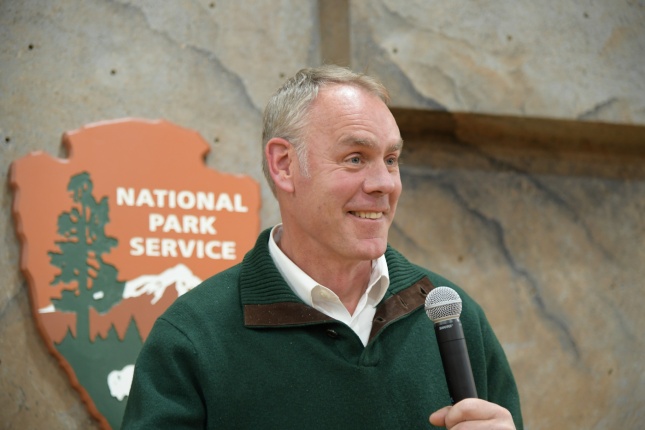By Printus LeBlanc
When Secretary of Interior Ryan Zinke was sworn in, he came into a department that has not reorganized in 150 years. However, in the same timeframe new agencies were created, miles of red tape were introduced, and volumes of rules were added. The mammoth bureaucracy and inefficiencies have made the department one of the more despised government arms. Secretary Zinke sees that as a challenge and has embarked on an ambitious reorganization mission to make Interior more user friendly and less hostile to the people it is supposed to serve.
The Department of Interior is responsible for conservation and management of most federal land and natural resources. The agency is operating in 2,400 locations with over 70,000 employees around the U.S. Interior sites get over 500 million visitors to them each year. Everything from the food in the grocery store to the raw materials used to make used to make Navy ships has at some point fallen under the purview of Interior. It would not be a stretch to say the department touches more lives everyday than any other federal agency, with the exception of the IRS. For this reason, it is important the agency run smooth and efficiently delivering the seamless customer service. But it doesn’t.
Imagine two fish in a river, one salmon and one trout. The salmon falls under the jurisdiction of the Department of Commerce and the trout us under the Fish and Wildlife Service (FWS) in the Department of Interior. Upstream is a dam built and controlled by the Army Corps of Engineers, and downstream is another dam maintained by the Bureau of Reclamation (BOR) also in the Department of Interior. The river continues with forests on one bank, under the U.S. Forestry Service (USFS) of the Agriculture Department, and the other bank has an Indian Reservation, falling under the Bureau of Indian Affairs (BIA). Now imagine a bridge is needed across the river.
The proposed bridge would have to get approval from multiple cabinet level agencies, waste thousands of man hours on red tape, and spend millions before a single shovel of dirt is even removed. By time the project is started, it is outdated, let alone finished. If it is an energy production project, the extra time and bureaucracy will cost the companies involved millions of dollars. That alone could sink the project.
To get an idea of how egregious the bureaucracy in the Department of Interior one only has to look at time it takes to approve Applications for Permit to Drill (APD). In FY 2016, the average wait time for drilling permits was 257 days, despite the rules requiring the permits to be reviewed within 30 days. With a wait 8 times longer than the rule states, why would anyone want to do business with the federal government?
Zinke’s reorganization plan will redraw the regional maps. The new regions were drawn using watersheds and ecosystems generally following county lines. The new regions will be more involved in the decision process instead of D.C. making all the decisions. More authority will be given to personnel in the field. How does someone in Washington D.C. know what is happening in Utah or Arizona?
The new regional maps will also put someone in charge. As often is the case today no one knows which agency takes the lead on projects that deal with multiple agencies, which is almost all of them. The new regions will have Interior Regional Directors (IRDs). The IRDs will report directly to the Deputy Secretary and be responsible for corralling the multiple agencies in their region while moving the ball forward on projects. This is what halts so many current projects. No one knows which agency will take the lead.
Zinke plans on rolling out the plan in Alaska first. The nation’s largest state is in a single time zone almost all DOI bureaus operate there, and there is only one state government to deal with. The conditions make it perfect for the pilot program.
Secretary Zinke is right, it is time for Interior to be reorganized. The massive bureaucracy answers more to the D.C. swamp than it does the people it is supposed to serve. Zinke’s plan should be embraced by all limited government politicians in Congress. Here is another chance to drain the swamp, hopefully Congress will bite.
Printus LeBlanc is the Legislative Director for Americans for Limited Government.







